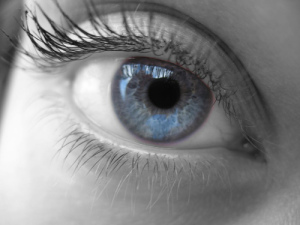by
Brendon Nafziger, DOTmed News Associate Editor | September 23, 2009

Many patients in vegetative
states can learn to pair a
tone with a puff of air
to the eyes
Many people in vegetative states can still learn, suggesting they might retain some level of awareness, according to a study published in Nature Neuroscience this week.
Research in Argentina and England on people with disorders of consciousness (DOC) -- a diverse population of patients who are awake but seemingly lack awareness following severe brain trauma -- found that many were able to learn with a type of Pavlovian conditioning.
In the experiments, scientists worked with 22 vegetative and minimally conscious patients. They played a tone for the patients that, after a brief delay, was followed by a puff of air into the eyeballs. They also played a different tone that was not followed by the air puff to the eyes. They found that over half the DOC patients learned to blink (as measured by electromyography) in anticipation of the puff once the correct tone sounded, but not when the wrong one sounded. Some of the patients showed less discriminating learning, and would blink in response to either tone.



Ad Statistics
Times Displayed: 137929
Times Visited: 7957 MIT labs, experts in Multi-Vendor component level repair of: MRI Coils, RF amplifiers, Gradient Amplifiers Contrast Media Injectors. System repairs, sub-assembly repairs, component level repairs, refurbish/calibrate. info@mitlabsusa.com/+1 (305) 470-8013
As a control, the experimenters tested subjects under anesthesia during laparoscopic surgeries who were asleep but not under muscle relaxants. They showed a hearty eye blink response when air was puffed into their eyes, and separate tests suggested they could still hear. Nonetheless, these patients could not learn to associate the tone with the air puff.
DOC patients who learned were also 86 percent more likely to show signs of improvement when tested a month or a year later, such as moving from a vegetative to a minimally conscious state, or rising in the coma recovery scale.
"When you do a drug trial, they use hundreds of patients, and they get a small effect," Tristan Bekinschtein, Ph.D., lead author of the study and a researcher at Cambridge University, tells DOTmed News. "We used just a few patients, and the [EMG] machine alone was telling us the patients were getting better."
BUT ARE THEY CONSCIOUS?
True Pavlovian classical conditioning -- say, getting a dog to salivate at the sound of a bell that's usually paired with the slopping of dog food into a bowl-- is not a test of consciousness, Dr. Bekinschtein explains. But he believes trace conditioning, the kind used in the experiment, is.
In trace conditioning, an arbitrary stimulus, such as a tone, is separated from the reflex-producing stimulus, such as the air puff to the eyes, by a short delay, in this experiment one of about 500 milliseconds. This interval is key, because this is where conscious attention might be required to make the association between the two stimuli.

